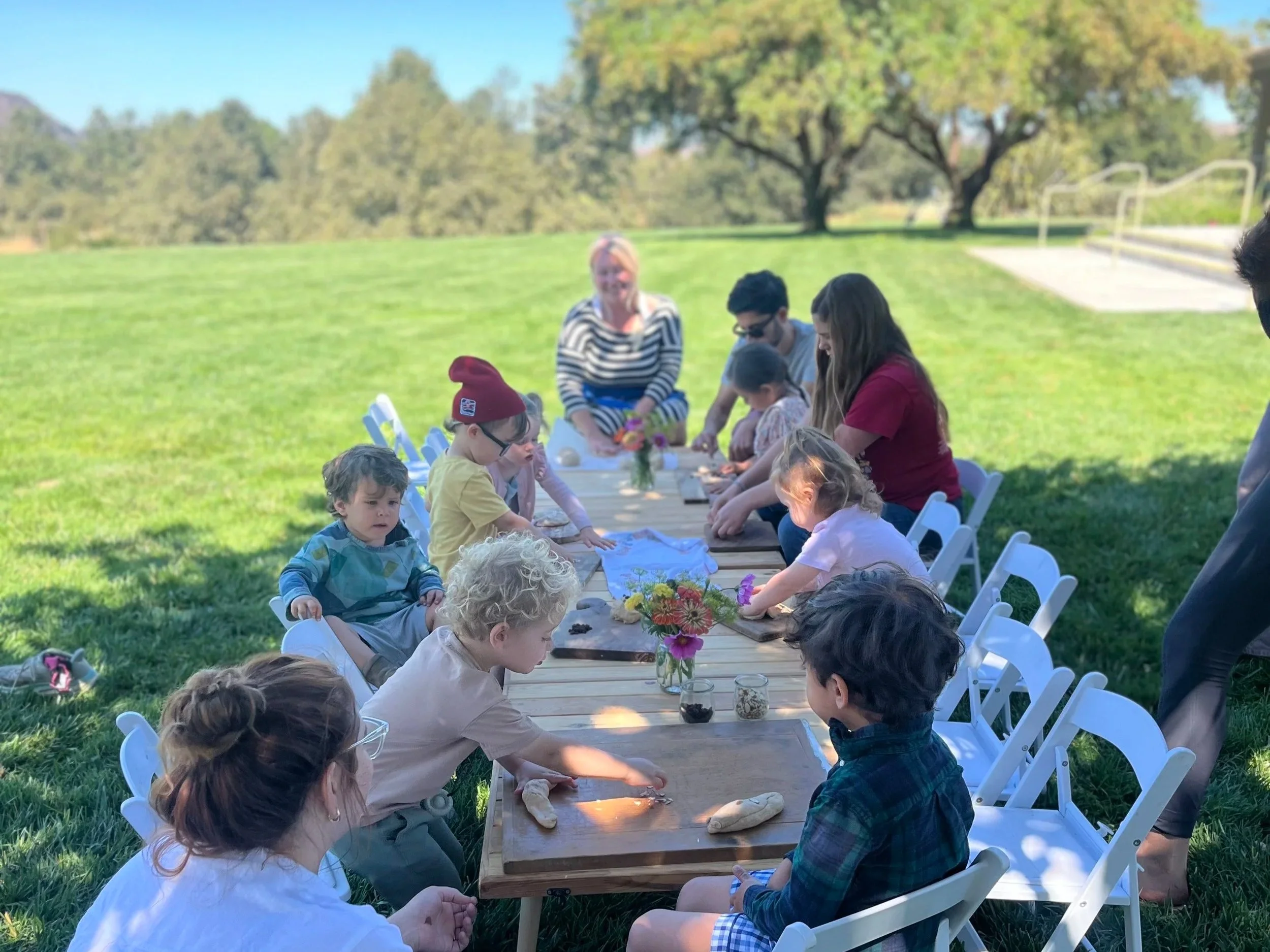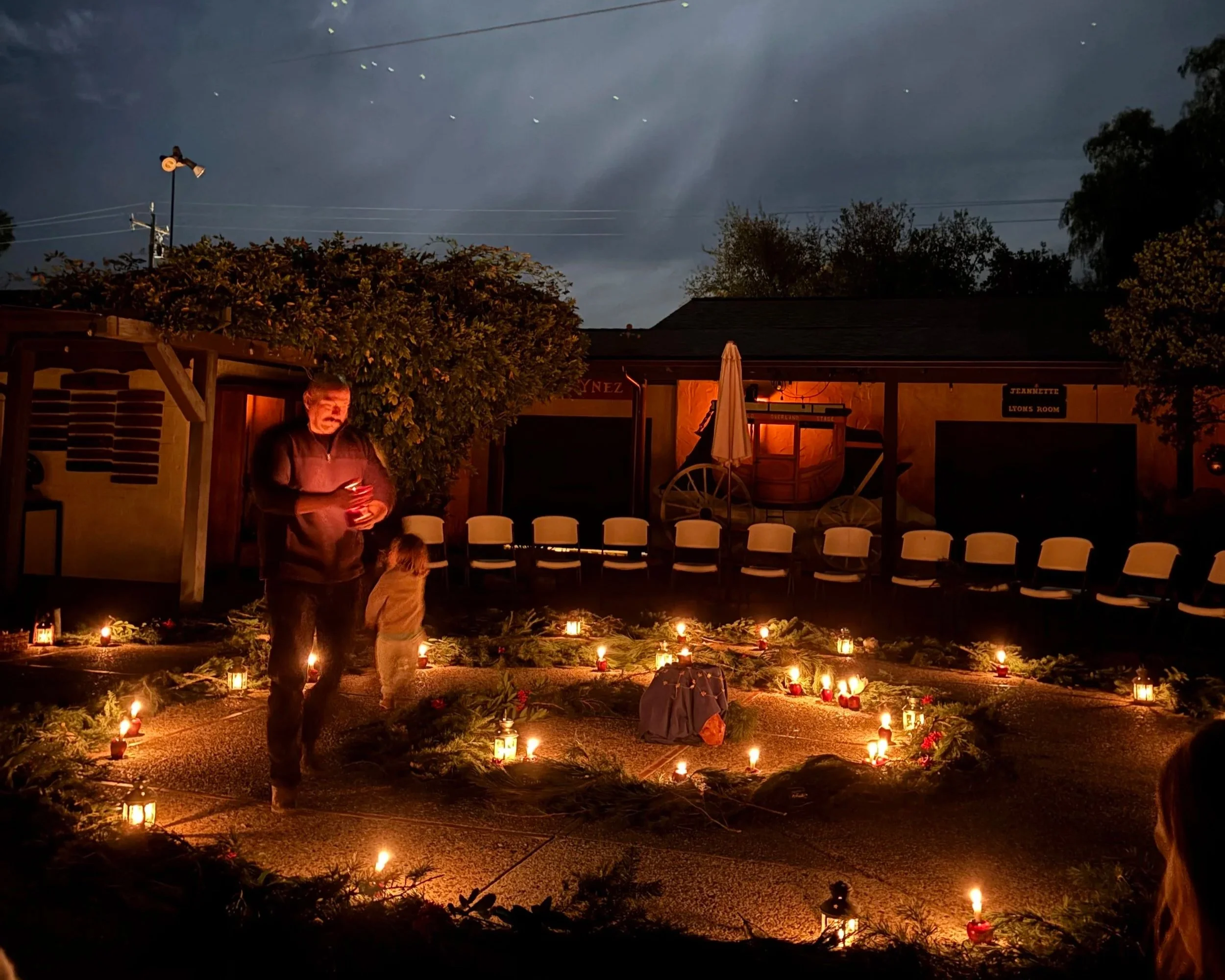5 Things Your Child Really Needs in Kindergarten & How Waldorf Meets These Needs
Waldorf education recognizes that healthy cognitive development depends on robust physical, emotional, and imaginative development first, and play is the soil in which these essential roots grow.
Children who engage deeply in imaginative play develop the very capacities that later support academic success, such as focus, memory, sequencing, language development, and narrative thinking. A child who spends hours building a fort or pretending to be a baker is developing more than creativity; they are practicing critical thinking, spatial awareness, and storytelling.
Kindergarten is a formative time in a child's life. It's not only the beginning of their school journey, but also a stage when essential foundations for lifelong learning and well-being are laid. In Waldorf education, this stage is treated with deep reverence and honors the development of the whole child, head, heart, and hands, rather than rushing them into academics. Waldorf kindergartens focus on what young children truly need to thrive, which isn’t worksheets or focusing on early literacy. Kindergarteners need time to slowly move through their day. They need presence, warmth, wonder, movement, and meaningful human connection. Waldorf kindergartens offer a rich, developmentally appropriate approach that meets children where they are while supporting the development of their full potential. Let’s take a look at what really matters during these precious early years:
Kindergartners Need a Sense of Rhythm
Waldorf Kindergartens honor consistent daily, weekly, and seasonal rhythms as an essential foundation for healthy development. Through the gentle repetition of songs, stories, and activities that unfold at predictable times each day and week, children come to know what to expect and it’s this predictability that provides a deep sense of security which helps young children feel safe, seen, and held within a dependable structure.
When a child knows that circle time always follows free play, or that bread baking happens on soup day, or that the changing seasons are celebrated with a festival, time becomes something that is experienced through the body, not the clock. This embodied rhythm nurtures trust, trust in the world, in the adults who care for them, and in themselves. It also reduces anxiety, as children are not overwhelmed by uncertainty or constantly adjusting to change. Instead, they are free to settle, to engage more deeply in play, and to grow into their inner life with confidence and ease.
These steady rhythms act as anchors and provide children with a sense of orientation in time and space. They help children integrate their experiences more fully, regulate their emotions, and gradually build inner stability. For the child, this creates a feeling of "All is well. I know what comes next. I am held by the world around me." In Waldorf education, rhythm is not rigid. It is living and flexible and infused with warmth, presence, and intention. Rhythm is one of the greatest gifts we can give to children, as it is the gift of knowing where they are in the flow of life.
Kindergartners Need Time to Play
To value play is to take a stand for childhood itself. In a world that prioritizes performance, speed, and outcomes, Waldorf Kindergartens value play, and this is often seen as a quiet but radical act. Through the lens of the Waldorf perspective, time for play is one of the most essential things we can do to support a child’s full and healthy development, and it matters more than we think. In Waldorf education, the first seven years of a child's life are viewed as a sacred phase of development, one in which the child learns primarily through imitation, movement, and sensory experience. During this time, play is the child’s natural mode of exploration, expression, and integration.
Waldorf educators understand that play is the work of the young child. It is how they learn about the world, develop social skills, practice problem-solving, and begin to understand themselves and others. But Waldorf educators don’t view this play as needing adult instruction or outcomes. Instead, they see unstructured, imaginative, self-directed play where children use open-ended materials as the kind of play that exercises a child’s will, builds their imagination, and strengthens their ability to focus and persevere.
Kindergartners Need Time Outdoors and in Nature
Time outdoors is non-negotiable in a Waldorf early childhood program. In all weather, children go outside to play, explore, and experience the natural world. This contact with nature is not only beneficial for their physical health but also for their cognitive development, and being outdoors is deeply nourishing on many levels. On the physical level, activities like climbing logs, digging in the sand, balancing on beams, and running freely on uneven ground supports the development of gross motor skills, coordination, spatial awareness, and physical strength. These full-body experiences are essential for healthy brain development, as research tells us that movement and cognition are intimately connected in early childhood. When a child lifts, carries, balances, or jumps, they are also developing focus, problem-solving abilities, and emotional regulation.
The benefits of outdoor time extend well beyond the physical. Nature is a living classroom and a healing environment, offering infinite possibilities for imaginative play, observation, and wonder. Waldorf educators recognize that a child’s sense of awe and reverence is deepened in the presence of nature’s beauty, like a dewdrop glistening in the morning sun, or the first crocus of spring, or the rustling of autumn leaves on a forest path. Daily time in nature also has a grounding and harmonizing effect on the child’s inner life. The fresh air, the open space, the ever-changing light and weather, all these sensory-rich experiences help children regulate their nervous systems, process emotions, and return to a state of inner balance. We live in a time when many children are overstimulated by screens and confined to indoor environments for far too many hours, and this places Waldorf’s stance on outdoor play and time in nature as both timeless and urgently relevant. Time outdoors in a Waldorf early childhood setting is not only about movement or fresh air, it is also about building a relationship with the earth, honoring seasonal rhythms, and allowing children to grow up in harmony with the natural world. It is truly an act of care for the child’s body, mind, and spirit, and a cornerstone of how Waldorf education nurtures the whole human being.
Kindergartens Need a Worthy Adult Model to Imitate
In Waldorf early childhood education, imitation is recognized as the primary mode of learning for the young child, not instruction, explanation, or correction, but through observation and imitation. Young children are deeply perceptive and impressionable, and they absorb the world around them through what they see, hear, and feel. What they see and experience in the environments that they are exposed to forms the foundation for their own inner development and future actions.
This is why meaningful, purposeful activity is at the heart of the Waldorf kindergarten. When teachers engage in real, joyful work, whether it’s baking bread, sweeping the floor, gardening, sewing, washing wool, or setting the table, the children are invited into a world that is both ordered and alive with intention. These tasks are not done for the sake of appearance, entertainment, or to just keep the children busy; instead, they are genuine and necessary parts of the daily life of the classroom. The authenticity of the teacher’s action is what gives the child something worthy to imitate.
Children naturally gravitate toward this kind of work. They might begin by simply watching, then mimicking small gestures, and eventually eagerly participate, carrying a basket of apples, kneading dough, or carefully folding cloths. In doing so, they are not only developing fine and gross motor skills, coordination, and stamina, but also gaining a deep sense of competence, belonging, and self-worth. They come to understand that they can contribute, that their actions matter, and that they are part of a larger whole.
More importantly, through imitation, children imitate the inner gesture behind the teacher’s work. When the teacher approaches a task with presence, care, and even reverence, the child perceives this mood and imitates it as well. In this way, the child learns not only how to do something, but also how to be with mindfulness, joy, patience, and rhythm. This inner attitude is just as important as the outer task.
Kindergartners Need a Slow, Unhurried Pace
In Waldorf kindergartens, there is a deep understanding that children need time to unfold, not just in body, but in heart and soul. Growth happens in rhythms and seasons, and each child develops at their own pace. A slow, unhurried approach to the early years honors the dignity of childhood and supports their lifelong well-being.
Rather than rushing young children into academics or pushing them to meet milestones prematurely, Waldorf education embraces a developmentally appropriate timeline where the focus is not on early intellectual performance but on cultivating the foundational capacities that will support healthy learning and living in later years. In a Waldorf kindergarten, the pace of the day reflects this developmental philosophy as there is time to greet the morning, to play deeply, to bake bread, to walk slowly through the woods, to sweep the floor with care, and the day’s transitions are gentle and predictable. There is no pressure to hurry or to complete tasks by the clock, and this slowness is intentional. It allows children to breathe, to settle into themselves, and to become fully present in whatever they are doing.
A slower pace also supports the development of attention and focus. When children are not being rushed from one activity to the next, they are more able to concentrate, to explore, and to engage deeply with their surroundings.
Research shows that an academic focus in early childhood can lead to stress, anxiety, and a disconnection from learning in later years. Waldorf educators recognize that the seeds of intellectual life are best nourished in childhood through giving children time so Instead of formal academics, Waldorf kindergartens emphasize rhythm, routine, creative play, and meaningful work. These elements create inner order and a sense of trust in life, the very qualities that prepare children not only for school, but for healthy development. The time for academics happens closer to age seven, when Waldorf children enter first grade eager, well-grounded, and developmentally ready to learn.
In today’s fast-paced world, the slow rhythm of a Waldorf kindergarten offers a gentler way of being, one that honors presence over productivity, process over outcome, and connection over speed.
Parents often report that their children become calmer, more centered, and more joyful within the slow and predictable rhythm of a Waldorf Kindergarten classroom. They sleep better, play more creatively, and show greater emotional balance. These are not small things and are actually signs of healthy, holistic development unfolding in its own time.
A slow, unhurried pace in early childhood is about doing what matters most. It’s about giving children the gift of time, time to play, to wonder, to grow, and to become fully themselves.
About the Author: Chinyelu Kunz
Chinyelu Kunz is a Waldorf-trained early childhood expert, parenting expert, Mom of 3, Joint Head at Hundred Hills School, and founder of We Nurture Collective.
She is the author of The Little Book of Parenting and her latest book, Away to Dreamland.





